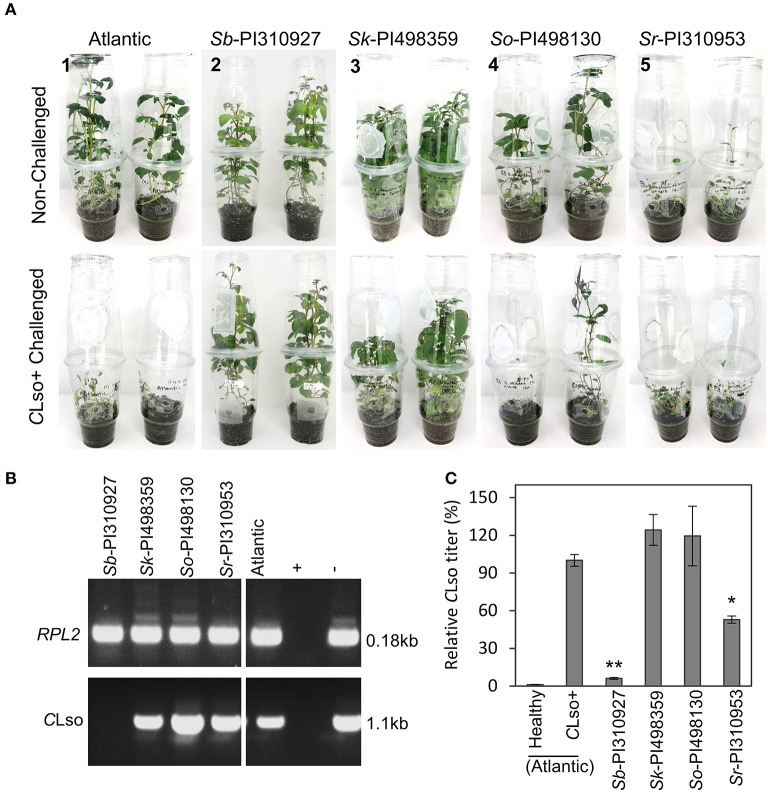野生ジャガイモの近縁種にゼブラチップ耐性が存在することが明らかに。 Texas A&M AgriLife-led study shows some zebra chip resistance exists in certain wild potato relatives
2022-09-13 テキサス A&M大学
この研究は、世界中のジャガイモ生産に影響を及ぼしているこの病気に対する新しい遺伝的抵抗性を特定する取り組みの一環として、52種の野生ジャガイモ(このうち1種は抵抗性、3種は耐性)を対象に行われた。
Solanum sect. Petota多様性パネルに属する52の野生ジャガイモ属の植物体を使用した。この研究では、ウィスコンシン州の米国国立植物生殖質システムから入手したジャガイモの種子から育てた、Petota多様性パネルに属する52の野生ジャガイモの植物体を使用した。
52のアクセッションのいくつかは、感受性と中程度の感受性を持ち、いくつかの上向きの葉のローリング、クロロシスと植物の発育阻害を示した。
<関連情報>
- https://agrilifetoday.tamu.edu/2022/09/13/can-wild-potato-relatives-help-tame-zebra-chip-disease/
- https://www.ncbi.nlm.nih.gov/pmc/articles/PMC9363700/
野生ソラマメ属植物におけるジャガイモゼブラチップ抵抗性の同定と特性評価 Identification and Characterization of Potato Zebra Chip Resistance Among Wild Solanum Species
Victoria Mora, Manikandan Ramasamy, Mona B. Damaj, Sonia Irigoyen, Veronica Ancona, Carlos A. Avila, Maria Isabel Vales, Freddy Ibane, and Kranthi K. Mandadi
Frontiers in Microbiology Published: 2022 Jul 27.
DOI:https://doi.org/10.3389/fmicb.2022.857493

Abstract
Potato zebra chip (ZC) disease, associated with the uncultured phloem-limited bacterium, Candidatus Liberibacter solanacearum (CLso), is transmitted by the potato psyllid Bactericera cockerelli. Potato ZC disease poses a significant threat to potato production worldwide. Current management practices mainly rely on the control of the psyllid to limit the spread of CLso. The present study investigated new sources of ZC resistance among wild Solanum species. A taxonomically diverse collection of tuber-bearing Solanum species was screened; one ZC-resistant accession and three ZC-tolerant accessions were identified among the 52 screened accessions. Further characterization of the resistant accession showed that the resistance was primarily associated with antibiosis effects due to differences in leaf trichome density and morphology of the wild accession, which could limit the psyllid feeding and oviposition. This germplasm offers a good resource for further understanding ZC and psyllid resistance mechanisms, contributing to potato breeding efforts to develop ZC resistance cultivars. Alternatively, it could be used as a potential trap crop to manage psyllid and control ZC disease.



